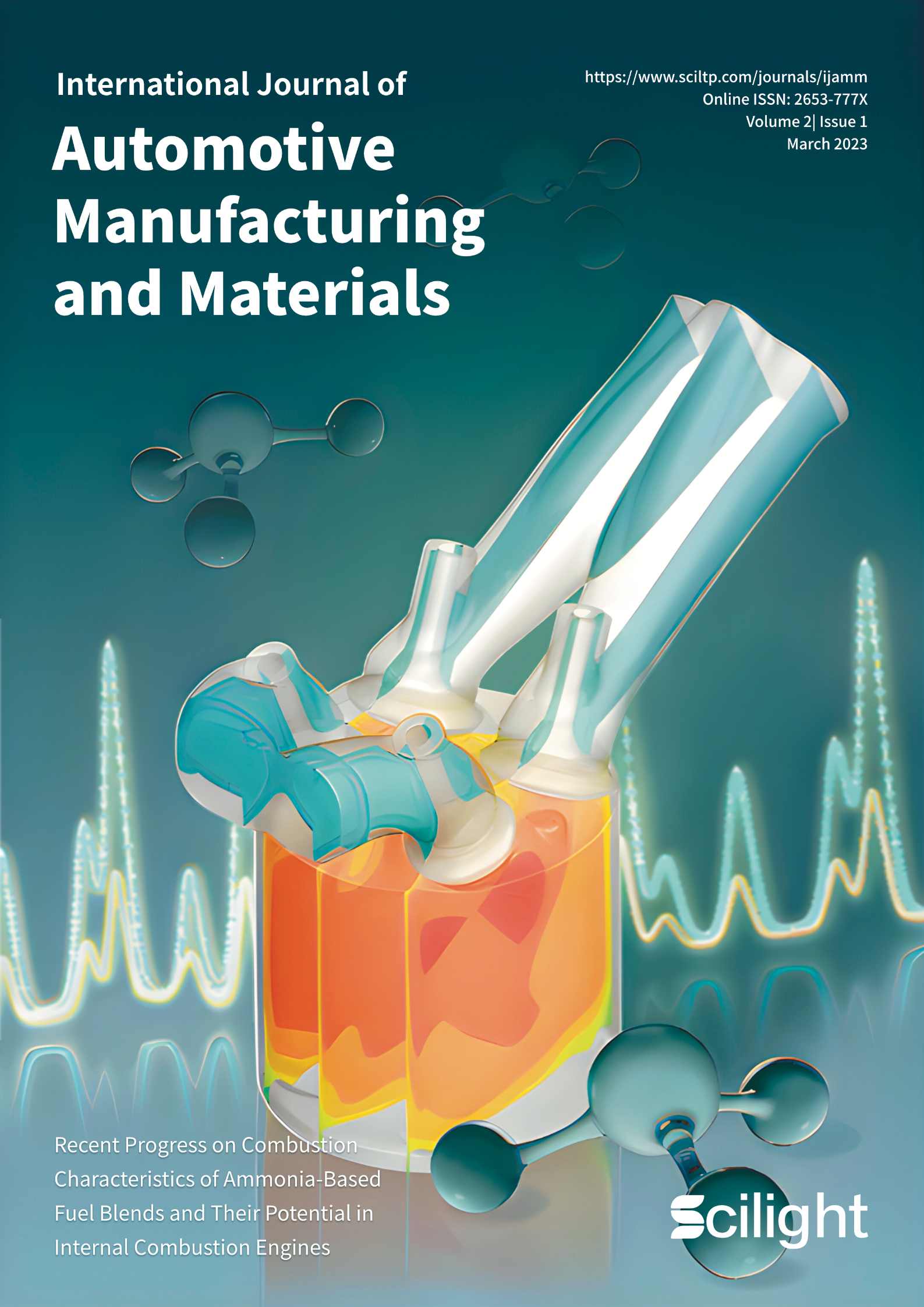Downloads
Download


This work is licensed under a Creative Commons Attribution 4.0 International License.
Article
Study of Diesel/Methanol Dual Fuel Combustion in CI Engines and Its Practice in China
Anren Yao 1, and Chunde Yao 2,*
1 School of Environmental Science and Technology, Tianjin University, Tianjin 300072, China
2 State Key Laboratory of Engines (SKLE), Tianjin University, Tianjin 300072, China
* Correspondence: arcdyao@tju.edu.cn
Received: 22 October 2022
Accepted: 21 December 2022
Published: 8 February 2023
Abstract: In order to release the pressure of energy safety from the dependence on oil supplies from overseas, methanol playing an important role as an alternative fuel in the automotive industry in China. At present time, methanol has been widely used as a fuel additive in spark ignition (SI) engines and industrial utilities in many fields. However, it is rarely applied to compression ignition (CI) engines due to its low cetane number, low vaporization rate as well as low solubility with diesel. Therefore, there is a great challenge in using methanol as fuel in CI engines since those engines are the main power units for most heavy-duty vehicles and construction machines as well as marine power units. Through many years of studies by our group, a strategy of diesel/methanol compound combustion (DMCC) was developed, which made methanol be able to apply to CI engines. The engines with DMCC could use diesel/methanol compound with methanol substitution ratio up to 50% for new engines and 30% for the used ones on applications of heavy duty vehicles, construction machines as well as marine power units. In this paper, the strategies of DMCC and the diesel/methanol dual fuel (DMDF) combustion working in CI engines at high and medium speeds are introduced, and the studies that we had done for DMCC and DMDF are reviewed based on their fundamental researches like ignition and combustion, experimental results on bench and field tests, many application examples such as on heavy duty vehicles, construction machines, and boats as well as locomotives.
Keywords:
diesel/methanol compound combustion (DMCC) diesel/methanol dual fuel (DMDF) methanol diesel compression ignition (CI) engine1. Introduction
Energy is the lifeline for a country, particularly for China with such large economic capacity. China is a country with less resources of oil and natural gas but with relatively rich resources of coal. Oil import from overseas for domestic use has become essential since 1993, and the oil dependence upon import had been more than 70% for the last 4 years since 2018 [1]. Thereby, the energy safety is a great concern for future economic development in China. Reducing oil consumption and finding proper alternative fuels are an imperative goal at the present time. Methanol is considered as a promising one among numerous alternative fuels for internal combustion engines through studies in past many years. Methanol could be attained not only from coal but also from biomass stuff, even from carbon dioxide combined with the hydrogen from water electrolysis (by photovoltaic with the help of catalyst), which is thus called e-fuel currently. Methanol has been thereby recognized as a renewable fuel , and attracted more attentions from researchers and engineers in the world. At present time in China, methanol has been used as a fuel for spark ignition (SI) engines either by blending with gasoline or using neat methanol directly due to its good solubility characteristics with gasoline and properties with low ignition energy. However, there are still three challenges for direct application of methanol to compression ignition (CI) engines due to its low cetane number (about 1/16 of that of diesel), low vaporization rate and low solubility with diesel. In the past years, many researchers had made great efforts on applying methanol to CI engines. However, they found that they couldn’t realize their objectives. The main practical methods of using methanol in CI engines were as follows: 1) Blending methanol with diesel [2]; 2) Emulsification of methanol with diesel [3]; 3) Heating mixtures in cylinder with glow plugs [4]; 4) Fumigation with ignition promotor [5]. Unfortunately, those methods were not successful as they thought before.
A new concept combustion called diesel methanol compound combustion (DMCC) was proposed in early time of year 2000 and had been being developed since then by our group in Tianjin University in China [6]. The DMCC strategy was composed of the two combustion stages. One was that the CI engine used neat diesel fuel to start up at cold conditions, the other one was to run diesel methanol dual fuel (DMDF) after engine fully warmed up. Methanol under less than 5 bar was injected into intake manifold and fumigated in inter-cooled air to form the mixture before entering cylinder, where it burned with diesel fuel injected in cylinder. The DMCC strategy could resolve the problem that methanol was difficult to be auto-ignited by compression at cold conditions. The amount of methanol injected was managed by an electronic control unit (ECU), which was developed by our group, and it could be flexibly adjusted to match with the required amount of diesel fuel to provide the power output according to the operating conditions under DMDF combustion mode. It could be a plug-in system for a CI engine and the engine configurations were maintained as they were. Therefore, the DMCC strategy was one of the most practical routes for methanol to be used for CI engines. For the DMCC strategy, there were two key aspects, one was how to switch the combustion mode between the two different modes, i.e., from neat diesel at cold start stage smoothly to diesel/methanol dual fuel combustion, and the other one was how to control the characteristics of DMDF dual fuel combustion. The latter one was more important to make DMCC strategy operate with high efficiency and clean combustion. Our group had been working on DMDF combustion mode for many years since the DMCC concept was proposed, including the ignition and combustion in constant volume combustion chamber (CVCC) [7], the interaction between diesel fuel and methanol while burning in cylinder [8], and the effects of parameters like diesel fuel injection pressure and timing as well as the different ratios of diesel to methanol in all DMDF combustion processes [9]. Currently there are numerous heavy-duty trucks as well as power units including on fishing boats and locomotives equipped and run with DMCC systems in China. In this paper, the authors would focus on the working principle of DMCC, as well as the details of its combustion characteristics, emission characteristics, and emission control systems.
2. Diesel/Methanol Compound Combustion (DMCC) Strategy and Diesel/Methanol Dual Fuel (DMDF) Combustion
2.1. DMCC Strategy Concept and Its Configuartion
Figure 1 showed the DMCC system configuration. The left side was the methanol supply system. Methanol was injected by an injection unit into the intake port of the CI engine, the injection was controlled by an ECU developed by our group. The amount of methanol injected at the pressure lower than 5 bar could be automatically changed by the methanol ECU according to the requirements of engine operation, and at the same time the quantity of diesel injected in cylinder varied with the operation conditions as required. Then the engine ran in diesel/methanol dual fuel (DMDF) combustion mode.

Figure 1. Working principle of diesel/methanol compound combustion (DMCC) technology.
2.2. Characteristics of DMDF Mode
2.2.1. Ignition and Combustion Characteristics of DMDF
Figure 2 showed the comparison between two different conceptual schematic of combustion modes. Compared with the conventional diesel combustion mode in Figure 2b, the DMDF mode in Figure 2a was different, in which the diesel fuel spray was surrounded by methanol/air mixture for combustion but the conventional diesel fuel spray is surrounded by only air. Methanol injected was atomized and fully vaporized in the intake manifold and then nearly homogenous charge mixture was formed with intake fresh air. When DMDF combustion occurred, the premixed methanol was much more than diesel. In addition, there was an effect of delaying ignition of diesel fuel while the diesel spray penetrated into methanol/air mixture in our previous study. In this case, there were more premixed fuels including methanol and diesel, followed by reducing the diffusion from diesel before ignition in cylinder. Therefore, the combustion rate of DMDF would be much quicker than that of neat diesel fuel, and soot produced in combustion would be less than that of neat diesel due to more premixed mixture involved in combustion [10].

Figure 2. Comparison of diesel/methanol dual fuel (DMDF) combustion mode and convention mode.
2.2.2. Experiments of DMDF ignition and combustion
In order to understand the combustion characteristics of DMDF, we designed a system with a constant volume combustion chamber (CVCC) as shown in Figure 3, and conducted many experiments in it. The CVCC had two injectors, one for diesel and the other one for methanol, which could be used to investigate the characteristics of the dual fuel combustion. With this device, the properties of DMDF combustion mode were observed and its recognition was extended. Figure 4a-e showed that there are four kinds of typical combustion modes of DMDF. In order to identify these combustion phenomena in detail, we conducted many tests on bench, as shown in Figure 5, to acquire information from these different combustion modes through analysis of heat release rate (HRR) in cylinder [11].

Figure 3. CVCC system for investigation into combustion characteristics..
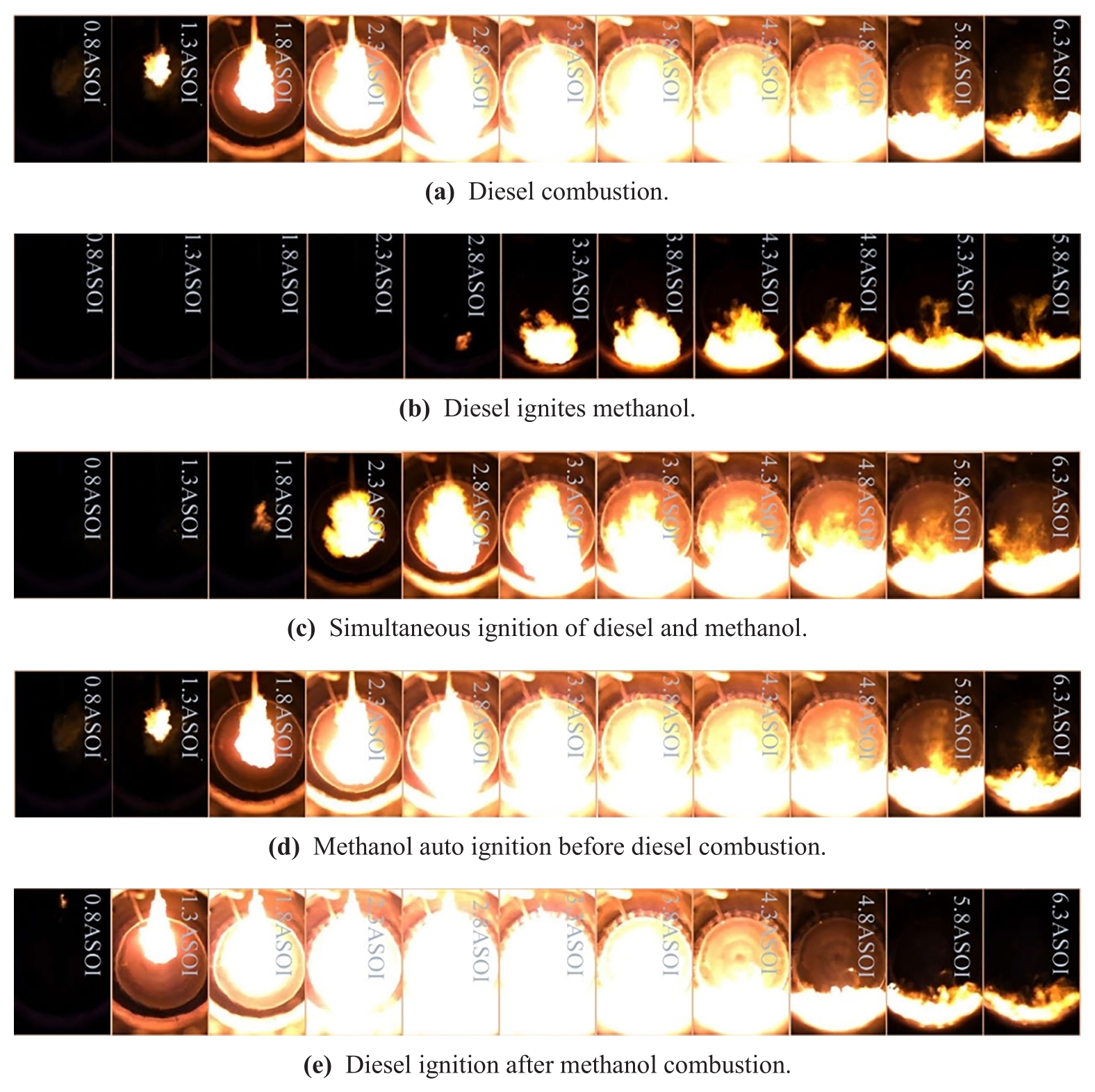
Figure 4. Flame structure development processes under different combustion modes.
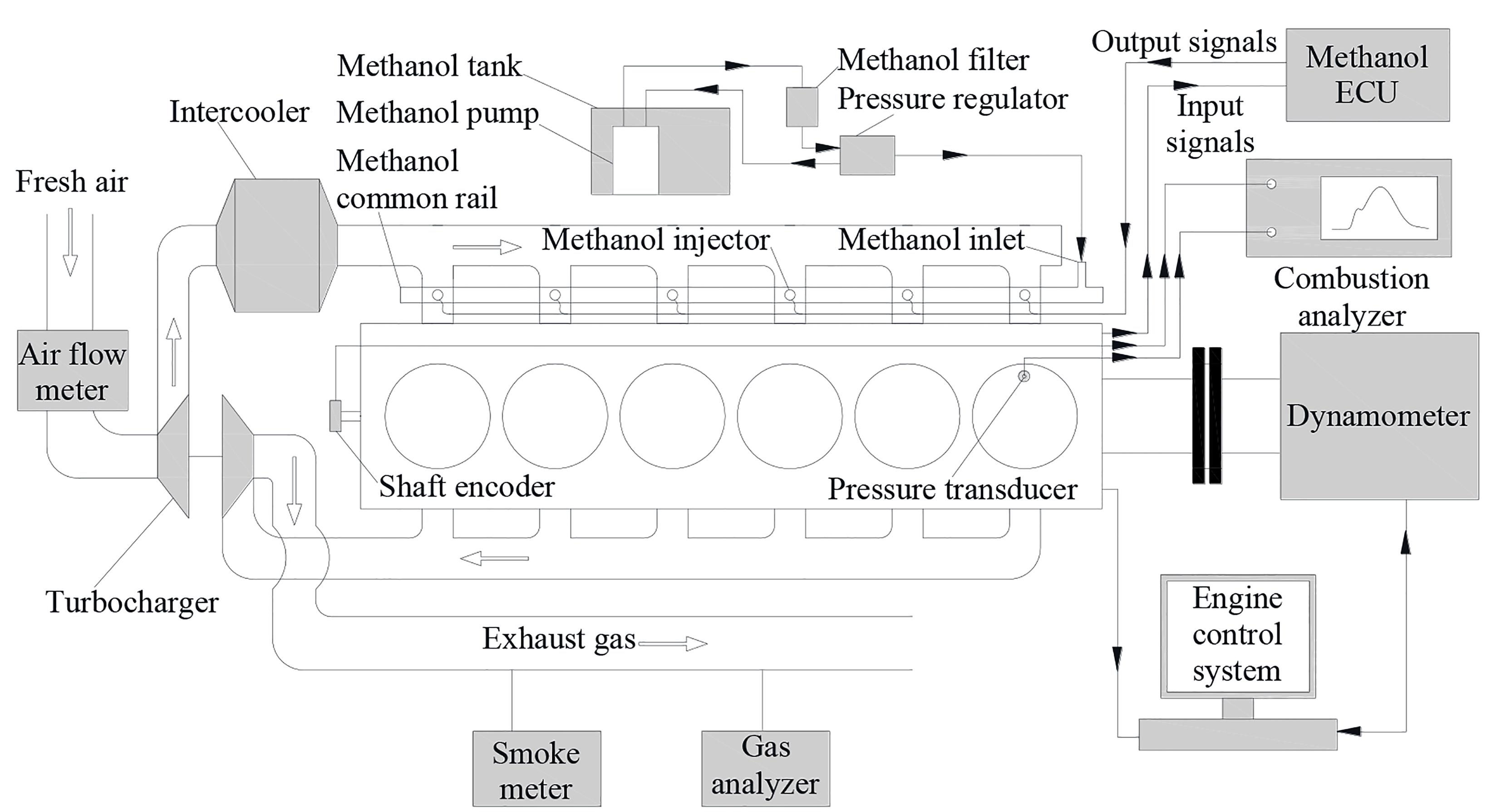
Figure 5. Schematic diagram of engine setup.
2.3. Typical Ignition Mode of DMDF
Based on the HRR shapes, the four modes of DMDF were divided [12], seeing Figure 6a‒d. The first one was unimodal, which looked like a “bell-shape”. The second one looked like a low case letter “m”, so it was called “m-shape”. The third one was bimodal, but it looked like an upper case letter “M”, so called as “M-shape”. The last one was unimodal, which was similar to that of conventional diesel combustion, which usually appeared at part load.

Figure 6. Cylinder pressure and heat release rate (HRR) of typical ignition mode of DMDF.
The above four combustion modes had quite different effects on engine performance. Figure 7a,b showed that the effects of four modes on a same engine performance operating in DMDF operation by means of regular emissions NOx, soot, CO and unburned hydrocarbon (HC) as well as the brake specific fuel consumption (BSFC). Mode 1 and mode 2 had the better performances comprehensively. Mode 3 often happened at full load with late diesel injection timing and low methanol substitution percentage (MSP), and mode 4 occurred at part load or low load. In those cases, running DMDF modes needed to tune engine carefully to avoid those modes like mode 4 [13]. The comparison of comprehensive performances of the engine running with different DMDF mode were summarized in Table 1.
Table 1. Engine test conditions, brake thermal efficiency (BTE), NOx and soot emissions of four typical combustion modes.

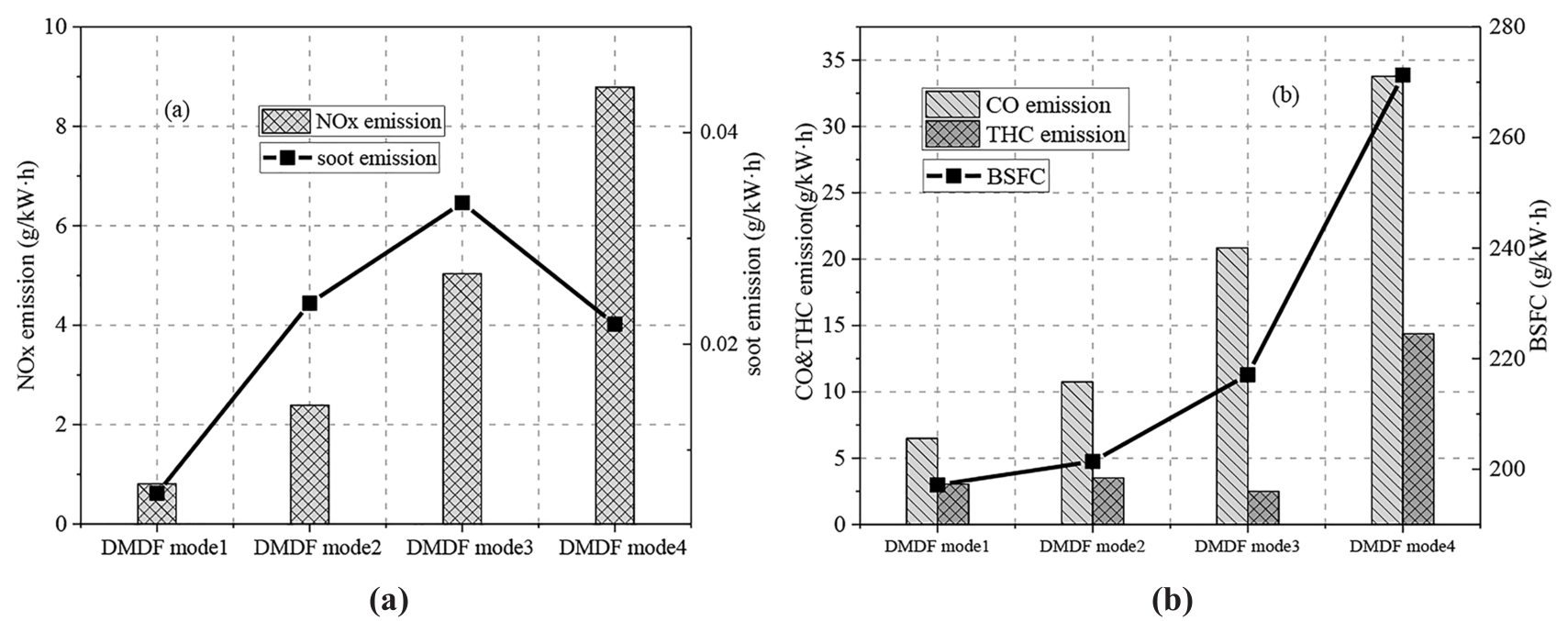
Figure 7. Comparison of regular emissions and brake specific fuel consumption (BSFC) between typical combustion modes of DMDF.
1 MSP: methanol substitution percentage;2 BTE: brake thermal efficiency;3 DMDF: diesel/methanol dual fuel.
2.4. Combustion Characterisitcs of DMDF Mode
2.4.1. Comparison of Combustion Modes between Diesel and DMDF
Figure 8 showed that the difference between the conventional diesel combustion mode and the DMDF mode. The former one had two pressure peaks in cylinder, and its heat release rate (HRR) also showed two stages, in which one was premixed combustion, the other one was diffusion combustion. But the latter one had two pressure peaks in cylinder, and its HRR was only one peak. It meant that the diesel/methanol dual fuel combustion mode had quicker burning rate in cylinder and roar combustion with higher rate of pressure rise with crank angle.
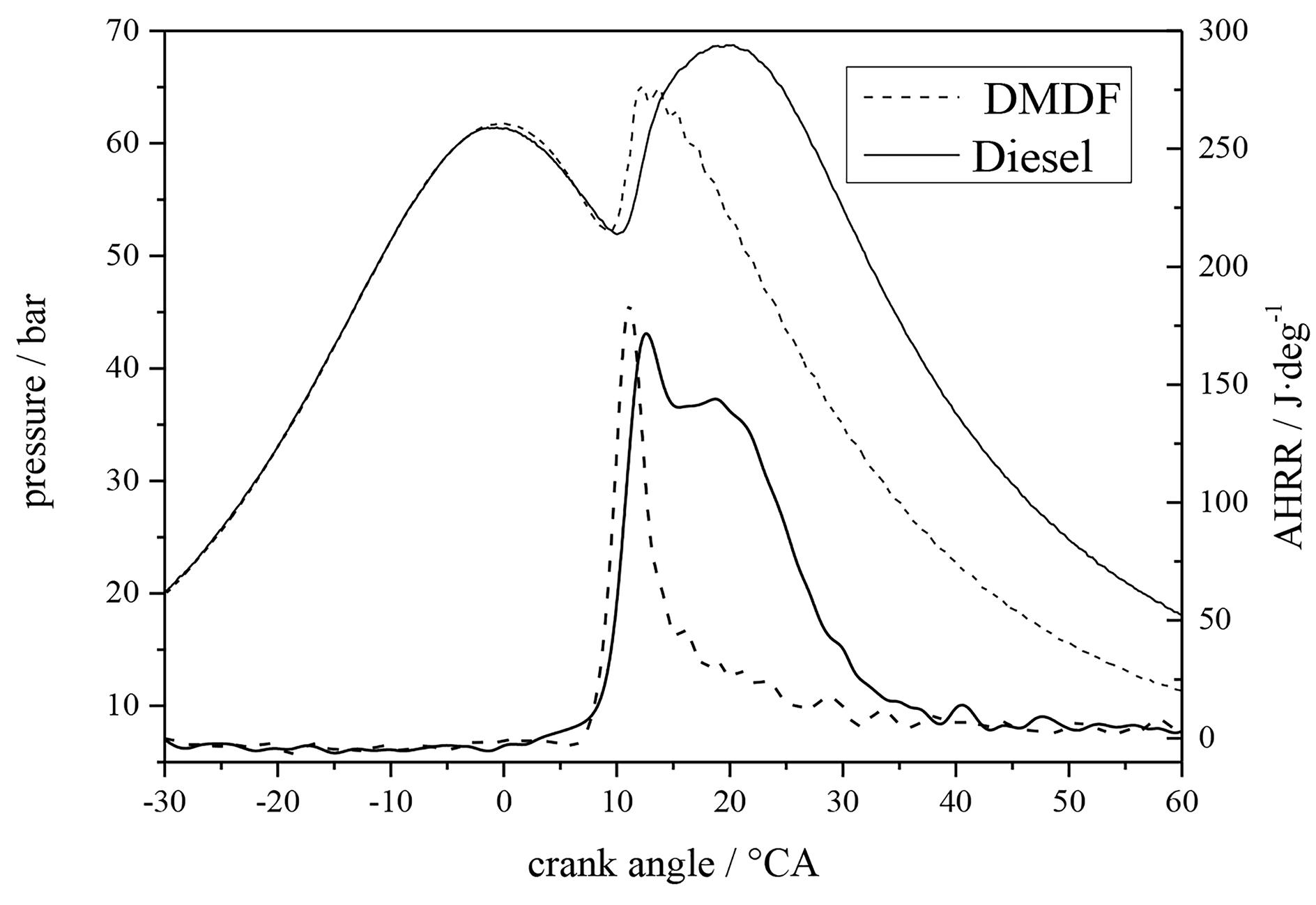
Figure 8. Comparison of combustion between diesel and DMDF mode at partial load [14].
2.4.2. Operating Range of DMCC
Through heavy workload done on bench engine, the operation range map for DMDF combustion mode under different methanol substitution percentage (MSP) was obtained [15], as shown in Figure 9a. From the map, it was found that the maximum MSP greatly depended on the engine load, reaching its peak of about 76% at 43.5% engine load under this particular speed. Furthermore, the map told that the range of DMDF operation was limited by four boundaries: partial burn, misfire, roar combustion and knock. At low engine load, especially below 20%, the increase of MSP resulted in late and incomplete combustion. The reason was that the methanol mixture was too lean to be ignited by diesel fuel. Therefore, it was suggested that MSP should not be high in the operation. The roar combustion and knock usually occurred at high or full load when too much methanol involved in combustion. Lots of premixed fuel joined in burning not only speeded up the combustion rate but also resulted in knocking occurrence, seeing Figure 9b.
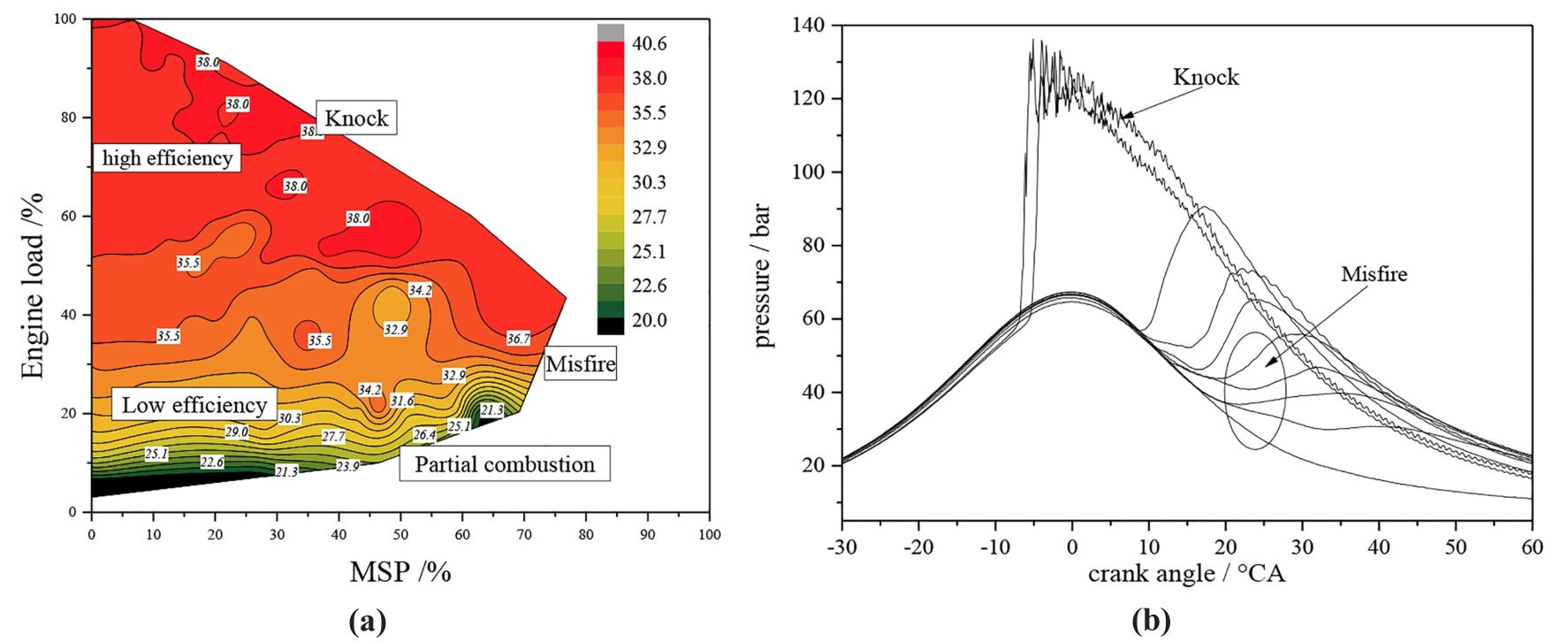
Figure 9. Experimental operating range and brake thermal efficiency (BTE) contours for the DMDF engine.
2.4.3. Extension of Operating Range with Exhaust Gas Recirculation (EGR)
Figure 10 showed the effects of EGR ratios & MSP on NOx and soot emissions at midium load conditions. It was known from the above operating range of DMFD that extension of the operating range was specially required for those utilities with high methanol percentage in operation. The exhaust gas recirculation (EGR) was effective means to increase MSP and reduce the emissions of NOx and soot [16]. Proper ratio of EGR could provide the best choice for extending the operating range for DMDF mode.

Figure 10. Effects of exhaust gas recirculation (EGR) ratios and methanol substitution percentage (MSP) on NOx and soot emissions at mid load conditions.
2.4.4. Emission Control System of DMCC
The engine equipped with DMCC system had lower NOx and paticulate matter (PM) emissions than those of neat diesel mode, but CO and HC emissions were rather higher [17]. The reason was that methanol had high latent heat, and C-C bond free. It would absorb much heat from intake air to vaporize and mix together with intake air, and lower the temperature of intake mixture while methanol was injected and atomized in intake manifold, so that it decreased NOx and soot production in DMDF mode. It was important that the engine with DMCC system could meet the requirements of China VI exhaust emissions legislations without the assistance of selective catalyst reduction (SCR), which implied that the DMCC system did not need urea to help elimination of NOx emissions. But things had two sides. Because premixed methanol entered the cylinder, its lean part could not be burned completely, particularly at low load. As a result, its exhaust gas might contain more unburned hydrocarbon (HC) and carbon monoxide (CO) than those of diesel engines. These HC and CO must be treated by using appropriate after-treatment devices for DMCC engines to meet increasingly stringent emission regulations. The diesel oxidation catalyst (DOC) was an effective measure to control the emissions of CO, HC, unburned methanol and formaldehyde in DMCC engines. The DOC usually adopted a cordierite ceramic carrier. The noble metal components used in DOC were platinum and palladium with ratio of 2:1 typically. The noble metal content was 40 g/ft3, and the pore density was 400 cpsi. With the DOC, HC and CO from the engine with DMDF mode could be completely eliminated at the light off temperature 240~250 °C of catalyst.
Figure 11(a)-(c) showed that the emissions of HC, CO and formaldehyde before and after DOC. The abbreviation of A-0.35 in the figures meant A speed (European Steady Test Cycle (ESC)) and 0.35 MPa brake mean effective pressure (BMEP), other abbreviations were similar [18].

Figure 11. Effects of diesel oxidation catalyst (DOC) on (a) hydrocarbon (HC) emission, (b) carbon monoxide (CO) emission and (c) formaldehyde emission on DMCC engines.
Figure 12 showed the comparison of NOx emissions and their compositions from DMDF combustion before and after DOC. Fig.12(a)showed that DOC had little effect on NOx emissions in general. However, it could be observed that DOC would cause a small increase in NOx emissions (maximum increase <10%) under certain operating conditions. A small increase in NOx emissions caused by DOC had also been found in many other studies. The reason might be that the large amount of HC and CO produced by the combustion of DMDF in the DOC caused the temperature to rise inside. A small amount of NOx was produced in this process under catalytic conditions.

Figure 12. Effects of diesel oxidation catalyst (DOC) on (a) NOx emission and (b) NO2 emission on DMCC engines [19].
Figure 13 showed that the trade-off relationship of NOx and soot. Soot was weakened as DMDF mode was adopted. The black line with square meant the trade-off relationship of NOx and soot under conventional diesel mode, and the dark green line with triangle (RMD1.54) was DMDF mode, herein RMD meant the energy ratio of methanol to diesel. The NOx in orange line with inverted triangle was almost straightly dropping down, nevertheless the soot emission was remained the same under DMDF combustion mode. It was obviously that the trade-off relationship between NOx and soot was much weakened while DMDF mode operating.

Figure 13. Relationship of NOx and soot emissions [20].
The test results showed that the engine with DMCC system could meet the requirement of CN VI exhaust emission legislations which were more stricter than that of Euro VI, with DOC+DPF (diesel particulate filter) [23]. It was important that the engines met with CN VI regulations without using selected catalyst reduction (SCR), that is, it did not require the urea. The measuring results were seen in Table 2.
Table 2. The world harmonized stationary cycle (WHSC) weighted emissions and economic performances for various technology routes [21, 22].

1 WHSC: world harmonized stationary cycle;2 PM: Particulate Matter;3 CO: carbon monoxide;4 THC: Total ydrocarbon;5 BSFC: Brake Specific Fuel Consumption;6 CN VI: China exhaust legislation VI;7 DOC: diesel oxidation catalyst;8 CDPF: Catalystic Diesel Particulate Filter.
3. Status and Practices of DMCC Engine Applications in China
The DMDF trucks had been widely used in China, several China manufacturers had launched the DMDF Truck products, such as Sinotruk,Shaanxi Heavy Duty Truck, Dongfeng Commercial Vehicle and so on. The Chinese government had initiated the pilot program for methanol vehicles in the year of 2012. There were five heavy-duty trucks equipped with DMCC system participated in the pilot program. After more than three years of test running in fields in city of Yulin, Shaanxi province, China Ministry of Industry and Information of Technology (MIIT) evaluated the operating results and permitted those vehicles in operation on road. In March 2019, MIIT allied with the other related ministries of China issued the approvals to promote methanol fuel to be used in certain provinces of China. Figure 14(a) showed the two of five heavy-duty trucks equipped with DMCC system participated in the pilot program; Figure 14(b)showed a service truck equipped with methanol filling tank as mobile supply for those testing trucks.
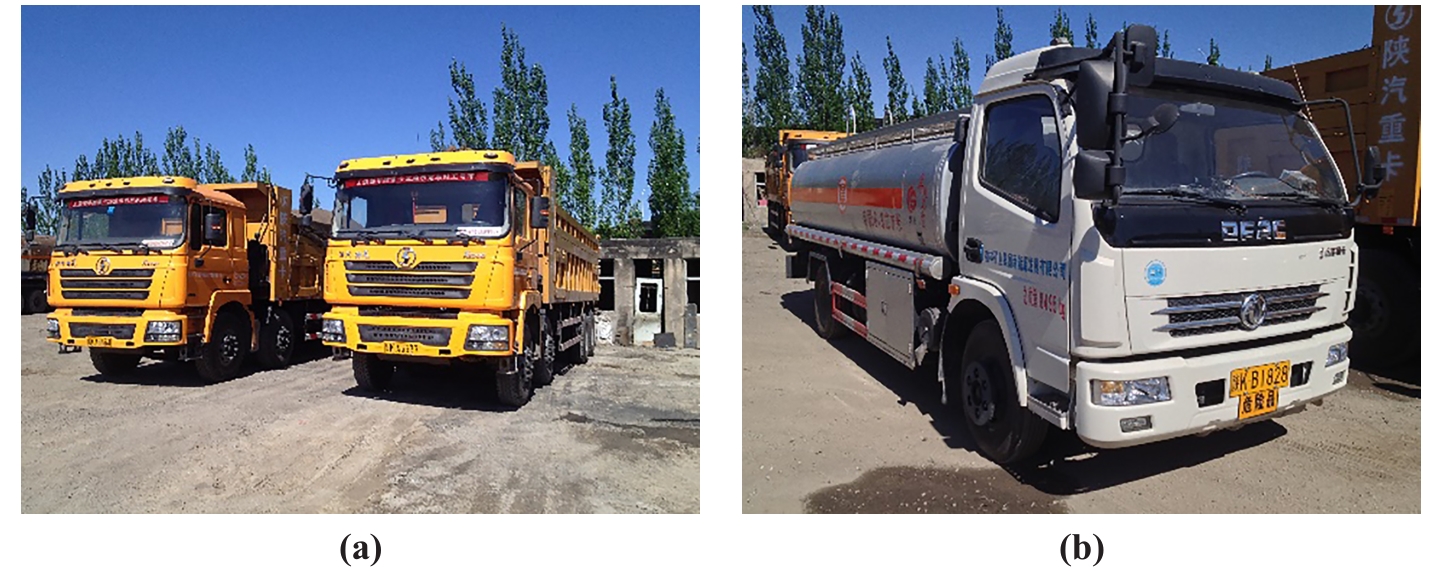
Figure 14. The trucks equipped with DMCC system participated in the pilot program of Ministry of Industry and Information of Technology (MIIT) and a service truck with methanol filling tank.
3.1. Heavy Duty Vehicle Application
Through the previous long time fundamental studies and lots of bench tests, the practical applications of the DMCC engines were tested in fields. The practices showed that the methanol diesel dual fuel combustion was indeed a clean and efficient combustion mode, which demonstrated a high practical application prospect [24].
DMCC technology participated in the pilot program of methanol vehicles initiated by MIIT in year 2012. Those vehicles using this technology had been in test running for more than two years in Yulin, Shaanxi Province. During the test running in fields, those five vehicles had run more than 100,000 kilometers, with a subsitution ratio of 46% methanol to diesel, and a replacement one litre diesel only required 1.2 liter methanol, the economic benefits of 22%, and the diesel saving over 100 tons. In July 2017, those vehicles passed the acceptance evaluation by the experts organized by the MIIT.
Besides of those vehicles participated in the pilot program initiated by MIIT, the engines equipped with DMCC system were chosen to test both on bench and in fields by several manufacturers including Dongfeng Automobile Ltd, Sinotruk Automobile Ltd and Weichai Power Ltd in China. Currently, the vehicles equipped with DMCC system had been running over more than fourteen provinces and three municipalities including Shanxi, Shaanxi, Qinghai, Ningxia, Inner Mongolia, Jiangsu, Guizhou, Yunnan, Shandong, Hebei, Gansu, Heilongjiang, Xinjiang, Anhui, and Shanghai, Tianjin and Chongqing respectively. The regions running those vehicles had covered the most part of China, including the areas at low altitude and the plateau with high altitude nearly 4000m like in Qinghai province. The vehicles ran through all seasons in the year. All those tests showed that the system operated stably and reliably and did not need the aftertreatment system such as SCR with urea. Part of those vehicles running were distributed in China, seeing Figure 15.
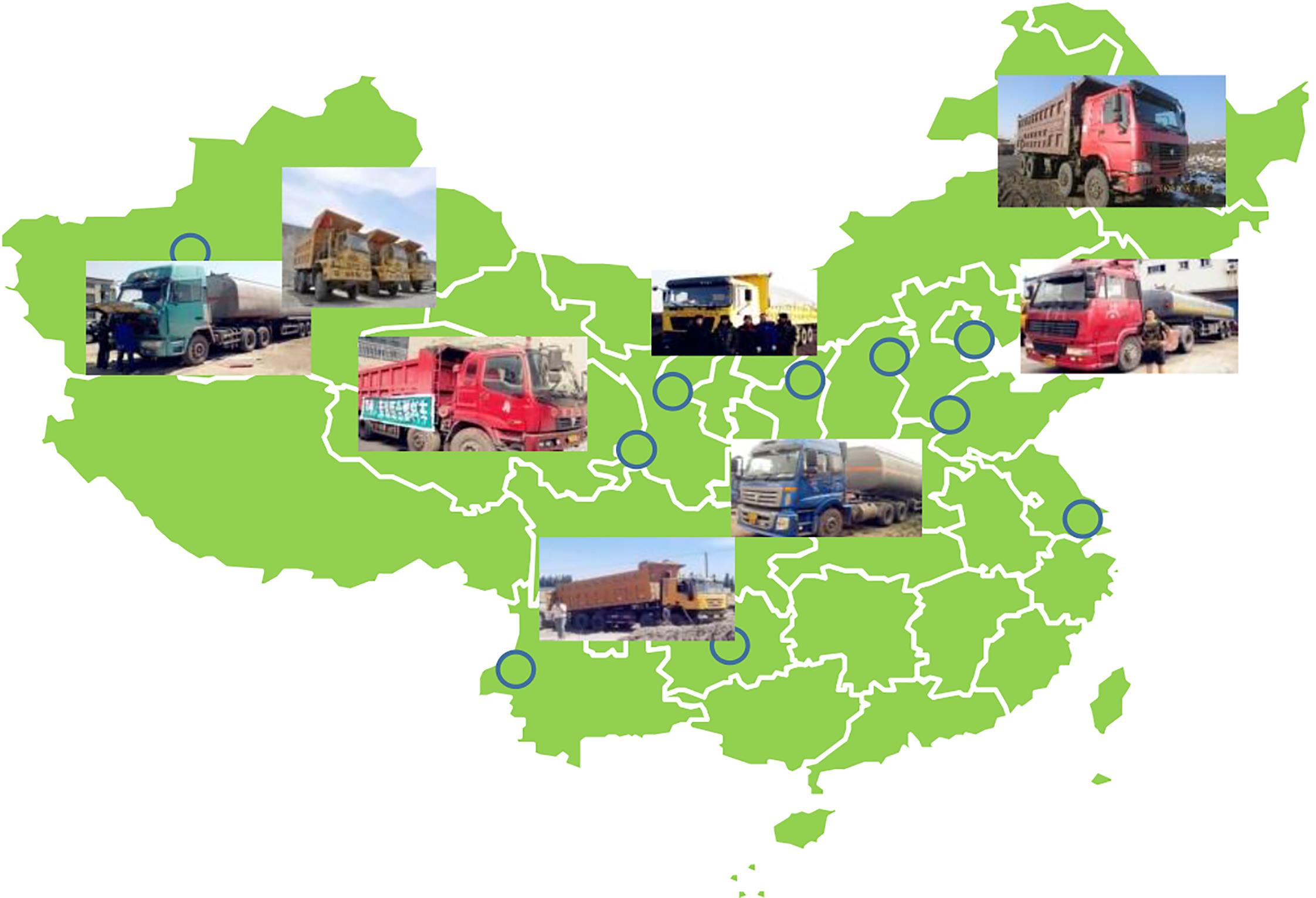
Figure 15. Application map of the vehicles equipped with DMCC system in China.
3.2. Construction Machine Application
Figure 16(a) showed that a large mining truck equipped with DMCC system was working in a phosphate mine in Guizhou province. Figure 16(b) was a wheel loader equipped with DMCC system working at Tianjin Port.

Figure 16. Large mining truck in mine and wheel loader at port equipped with DMCC.
3.3. Marine Power Unit Application
Figure 17(a) showed a fishing boat retrofitted by modifying from a conventional diesel engine to the one with DMCC system [25]. The engine was a medium speed diesel engine produced by Weichai Heavy Machinery Co. Ltd. in March 2014. The boat was driven by the engine with a rated power 184 kW and displacement 27.14 L. After modification with DMCC, its power output was kept as the same as diesel configuration, but soot emission was improved very much, to maximum 56% measured by an opacity meter.
Figure 17(b) showed a container carrier manufactured by Jianglong Ship&Boat manufacturing company, which had two DMCC engines for driving propellers. The engine was produced by Yuchai Motor company with a displacement of 10.338 L, rating power output of 238 kW@1800 r/min, (model YC6MK350DM-C20). The ship was launched in May 2019.

Figure 17. Fishing boat and container carrier with DMCC system.
3.4. Locomotive Application
The locomotive engine could also be modified from baseline diesel combustion mode to DMCC mode. A model of 16v240zd diesel engine on a DF4D locomotive was retrofitted with DMCC system. The modified engine had been installed on bench for test, as shown in Figure 18(b). Thereafter the engine was put into operation on a locomotive, seeing Figure 18(a). The fuel consumption and emission measurements were conducted on the modified engine.
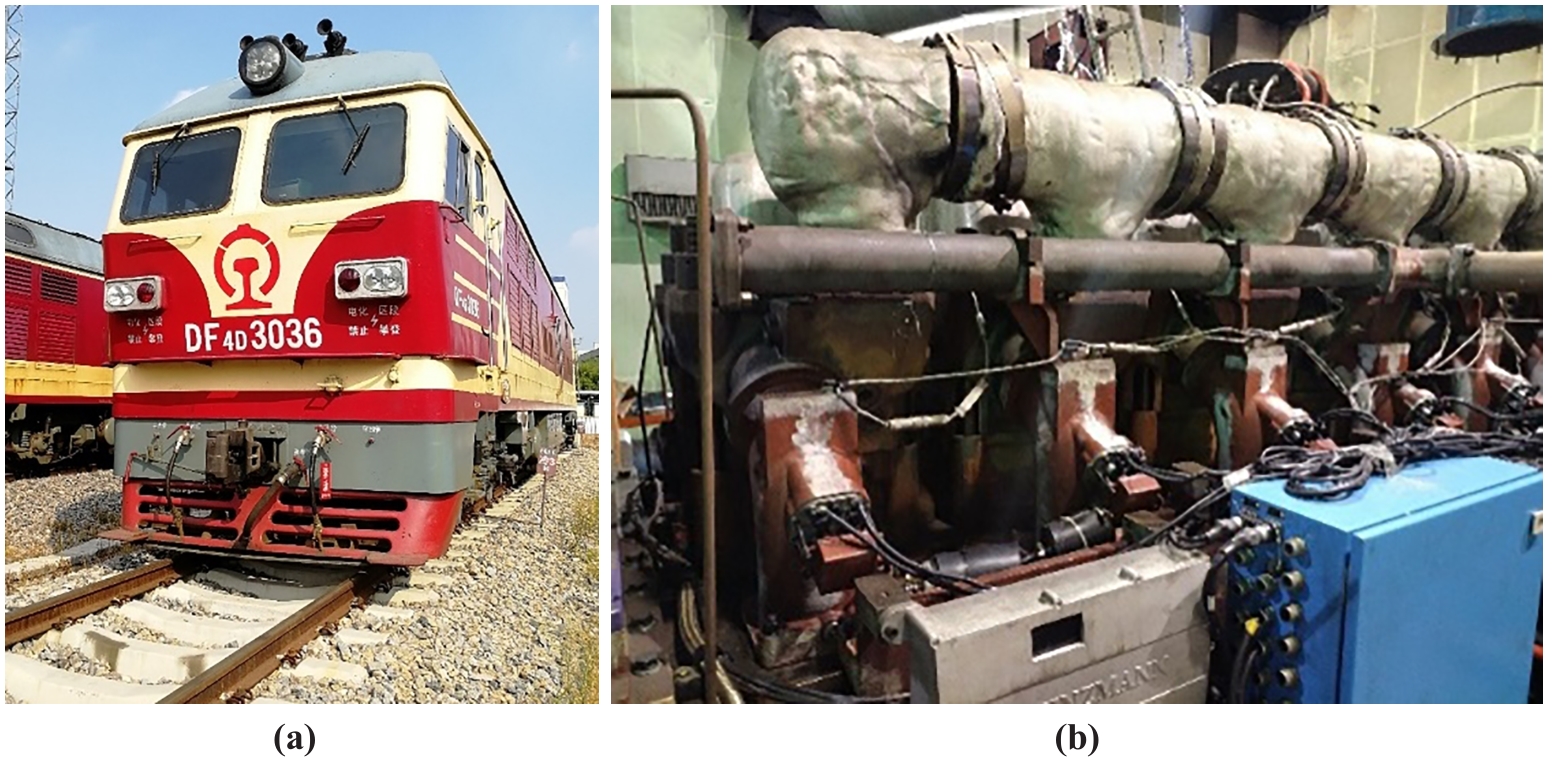
Figure 18. The locomotive modified with DMCC system.
4. Summary
Through the studies in many years, DMCC system was developed and the knowledge about DMDF combustion mode had been obtained. Compared with conventional diesel combustion mode, DMDF mode had two advantages, i.e., clean emissions without the help of urea and high thermal efficiency. In addition, new technology about DMDF combustion was acquired as follows:
- DMDF combustion mode was complicated with four kinds of typical combustion modes rather than the only one methanol mixture ignited by diesel fuel. DMDF mode 1 and mode 2 were favored.
- DMCC engine had its specific operating range. The range was restricted by four boundaries, i.e., partial burning, misfire, roar combustion and knock.
- The engine equipped DMCC could meet the requirements of strict emission legislations without the help of SCR system.
- The DMCC plug-in system are favored by in-use truck. The structures of the baseline engine could be remained as they were if applicable to any CI engine.
- The vehicles equipped with DMCC engine could be used in any place in China.
- Compared with the neat diesel mode, the engines with DMCC had better performance on power output, fuel economy as well as exhaust emissions.
Author Contributions: Conceptualization and methodology, C.Y.; methodology, software, validation, formal analysis, investigation, review and editing, A.Y. Writing draft, C.Y.; Supervision, C.Y.; project administration, C.Y.; funding acquisition, C.Y. All authors have read and agreed to the published version of the manuscript.
Funding: This research was funded by National Natural Science of Foundation, grant number No. 50576064, No. 20533040, No. 51336005 and Hightech project (863) of Ministry of Science and Technology grant number No. 2011AA11A240.
Data Availability: Statement: Not applicable.
Acknowledgments: The authors thank for all post undergraduate students who joined in the DMCC system development and DMDF combustion mode investigation as well as involved in various tests including bench and fields.
Conflicts of Interest: The authors declare no conflict of interest. The funders had no role in the design of the study; in the collection, analyses, or interpretation of data; in the writing of the manuscript; or in the decision to publish the results.
References
- Accelerate the Construction of Energy Internet. Available online: http://www.chinapower.com.cn/dlxxh/zhxw/20221018/171086.html (accessed on 22 October 2022).
- Huang, Z.; Lu, H.; Jiang, D.; et al. Performance and Emissions of a Compression Ignition Engine Fueled with Diesel/Oxygenate Blends for Various Fuel Delivery Advance Angles. Energy Fuels 2005, 19(2), 403‒410. DOI: https://doi.org/10.1021/ef049855d
- Bayraktar, H. An experimental study on the performance parameters of an experimental CI engine fueled with diesel–methanol–dodecanol blends. Fuel 2008, 87, 158‒164. DOI: https://doi.org/10.1016/j.fuel.2007.04.021
- Suresh, R., Kumar, P. S., DurgaprsadB., et al. Performance analysis for emission and combustion of Methanol blend diesel fuel in CI engine using glow plug. In Frontiers in Automobile and Mechanical Engineering -2010, Chennai, India, 25‒27 November 2010; IEEE: Piscataway, NJ, USA, 2010; pp. 164–169. DOI: https://doi.org/10.1109/FAME.2010.5714825
- Cheng, C.H., Cheung, C.S., Chan, T.L., et al. Experimental investigation on the performance, gaseous and particulate emissions of a methanol fumigated diesel engine. Sci. Total Environ. 2008, 389(1), 115‒124. DOI: https://doi.org/10.1016/j.scitotenv.2007.08.041
- Yao, C., Cheung, C.S., Cheng, C., et al. Effect of Diesel/methanol compound combustion on Diesel engine combustion and emissions. Energy Convers. Manag. 2008, 49(6), 1696‒1704. DOI: https://doi.org/10.1016/j.enconman.2007.11.007
- Hu, J., Yao, C., Geng, P., et al. Effects of pilot injection strategy of diesel fuel on combustion characteristics in a premixed methanol-air mixture atmosphere in a CVCC. Fuel 2018, 234, 1132‒1143. doi.org/10.1016/j.fuel.2018.07.160 DOI: https://doi.org/10.1016/j.fuel.2018.07.160
- Xu, H.J. Study on the Chemical Kinetics of Diesel/Methanol Duel Fuel Combustion. Ph. ThesisD., Tianjin University, Tianjin, China, 2012.
- Liu, J., Yao, A., Yao, C. Effects of injection timing on performance and emissions of a HD diesel engine with DMCC. Fuel 2014, 134, 107‒113. DOI: https://doi.org/10.1016/j.fuel.2014.05.075
- Xu, H., Yao, C., Xu, G. Chemical kinetic mechanism and a skeletal model for oxidation of n-heptane/methanol fuel blends. Fuel 2012, 93, 625‒631 DOI: https://doi.org/10.1016/j.fuel.2011.09.048
- Ma, B., Yao, A., Yao, C., et al. Multiple combustion modes existing in the engine operating in diesel methanol dual fuel. Energy 2021, 234, 121285, doi: https://doi.org/10.1016/j.energy.2021.121285 DOI: https://doi.org/10.1016/j.energy.2021.121285
- Lee, J., Chu, S., Min, K., et al. Classification of diesel and gasoline dual-fuel combustion modes by the analysis of heat release rate shapes in a compression ignition engine. Fuel 2017, 209, 587‒597. DOI: https://doi.org/10.1016/j.fuel.2017.07.067
- Wang, B. Extending the operating range of ultra-low emissions from DMCC engine (In Chinese). Ph. ThesisD., Tianjin University, Tianjin, China, 2020.
- Wang, Q. Investigation on the Operating Range of Diesel Methanol Dual Fuel Combustion (In Chinese). Ph. ThesisD., Tianjin University, Tianjin, China, 2016.
- Wang, Q., Wei, L., Pan, W., et al. Investigation of Operating Range in a Methanol Fumigated Diesel Engine. Fuel 2015, 140, 164‒170. doi.org/10.1016/j.fuel.2014.09.067 DOI: https://doi.org/10.1016/j.fuel.2014.09.067
- Wang, B., Yao, C., Chen, C., et al. To extend the operating range of high MSP with ultra-low emissions for DMDF unit pump engine. Fuel 2018, 218, 295‒305. doi.org/10.1016/j.fuel.2018.01.028 DOI: https://doi.org/10.1016/j.fuel.2018.01.028
- Wei, H., Yao, C., Dou, Z., et al. Comparison of the conversion efficiency of DOC and DPOC to unregulated emissions from a DMDF engine. Fuel 2017, 204, 71‒84. DOI: https://doi.org/10.1016/j.fuel.2017.05.021
- Wei, H., Yao, C., Pan, W., et al. To meet demand of Euro V emission legislation urea free for HD diesel engine with DMCC. Fuel 2017, 207, 33‒46. DOI: https://doi.org/10.1016/j.fuel.2017.06.070
- Lu, H. An investigation on the characteristics and influence factors of NO2 formation in DMDF engine (In Chinese). Ph. ThesisD., Tianjin University, Tianjin, China, 2018.
- Wei, L.J. Experimental Research on Realizing High Proportion of Methanol Substitution and High Efficiency and Clean Combustion on the Heavy-Duty Diesel Engine (In Chinese). Ph. ThesisD., Tianjin University, Tianjin, China, 2014.
- Wu, T. Study on the Combustion Technology of Diesel Methanol Dual Fuel for Meeting the Emission Regulation of China VI without Urea Aftertreatment (In Chinese). Ph. ThesisD., Tianjin University, Tianjin, China, 2020.
- Qu, G., Yao, A., Chen, C., et al. Effect of EGR strategy on combustion and emission of DMDF engine for meeting China VI emission legislation. Fuel 2021, 299, 120879, https://doi.org/10.1016/j.fuel.2021.120879 DOI: https://doi.org/10.1016/j.fuel.2021.120879
- Chen, C., Yao, A., Yao, C., et al. Study of the characteristics of PM and the correlation of soot and smoke opacity on the diesel methanol dual fuel engine. Appl. Therm. Eng. 2019, 148, 391‒403, https://doi.org/10.1016/j.applthermaleng.2018.11.062 DOI: https://doi.org/10.1016/j.applthermaleng.2018.11.062
- Liu, J., Yao, A., Yao, C. Effects of diesel injection pressure on the performance and emissions of a HD common-rail diesel engine fueled with diesel/methanol dual fuel. Fuel 2015, 140, 192‒200, DOI: 10.1016/j.fuel.2014.09.109 DOI: https://doi.org/10.1016/j.fuel.2014.09.109
- Wang, H., Yao, A., Yao, C., et al. Investigation to meet China Ⅱ emission legislation for marine diesel with Diesel methanol compound combustion technology. J. Environ. Sci. 2020, 96, 99‒108 DOI: https://doi.org/10.1016/j.jes.2020.04.017

